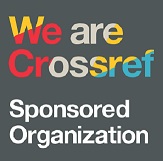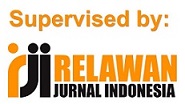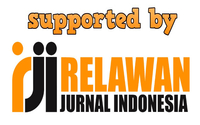HOW GENDER IS NAMED IN UNISEX PERFUMES: A SOCIO-ONOMASTIC APPROACH
Abstract
Perfume has long been used as a body fragrance, but in today’s world, its role extends far beyond mere scent enhancement. It has evolved into a significant aspect of personal identity, self-expression, and lifestyle. In fact, perfume is often perceived as a symbolic presentation of one’s character, emotions, social status and even cultural identity. This article explored gender representation in unisex perfume names using a socio-onomastics approach. This study analyzed a dataset of 3,390 unisex perfume names from 2017-2024 sourced from Fragrantica. Sketch Engine toolkit was used to measure word frequency and concordance. Finally, the findings revealed five primary naming references: specific natural elements, inventors or manufacturers, places of origin, materials and identity-related and gender-stereotyped. Among the identified, material-based naming was the most dominant particularly through references to floral, fruity, and woody elements. Although no specific words explicitly indicated a unisex representation or any association, some findings disclosed that terms traditionally linked to either masculinity or femininity were not always intended exclusively for that particular gender. In short, this showed the effort to break traditional gender boundaries. Nonetheless, it was found that names referring to males had a higher frequency compared to names referring to females, meaning that gendered elements in naming unisex perfume names remain exist.
Full Text:
PDFReferences
Ainiala, T., & Östman, J.-O. (2017). Socio-onomastics: The pragmatics of names (T. Ainiala & J.-O. Östman, Eds.). Amsterdam: John Benjamins Publishing Company. https://doi.org/10.1075/pbns.275
Alam, S., & Haque, S. A. (2021). Gender, language and indian reality television: Locating social stereotypes and linguistic sexism. Journal of Education Culture and Society, (2), 482–492. https://doi.org/10.15503.jecs2021.2.482.492
Bozkurt, F., & Mohammadi, M. K. (2023). A corpus-based socio-onomastic analysis on turkish and american horror film naming. CINEJ Cinema Journal, 11(2), 418–445. https://doi.org/10.5195/cinej.2023.589
Dewi, R. K., & Miranda, A. (2024). Representasi gender dalam iklan cetak minuman diet coke di prancis. 113 | JURNAL ILMU BUDAYA, 12(1). Retrieved from https://www.vogue.co.uk/article/jean-paul-
Elliot, A. J., & Maier, M. A. (2014). Color psychology: Effects of perceiving color on psychological functioning in humans. Annual Review of Psychology, Vol. 65, pp. 95–120. Annual Reviews Inc. https://doi.org/10.1146/annurev-psych-010213-115035
Fragrances - Worldwide | Statista Market Forecast. (n.d.). Retrieved March 21, 2025, from https://www.statista.com/outlook/cmo/beauty-personal-care/fragrances/worldwide
Frank, J. (1990). American dialect society gender differences in color naming: Direct mail order advertisements. American Speech, 65(2), 114–126. Retrieved from http://www.jstor.orgURL:http://www.jstor.org/stable/455532
Hallock, J. (2003). Colour assignment - preferences. Retrieved March 21, 2025, from https://www.joehallock.com/edu/COM498/preferences.html#favbygender
Hough, C. (2016). The oxford handbooks of names and naming. New York: Oxford University Press.
Humeniuk, I. (2020). Philosophy of red color: Linguistic and extralinguistic aspects. Wisdom, 15(2), 188–198. https://doi.org/10.24234/WISDOM.V15I2.342
Klink, R. R. (2001). Creating meaningful new brand names: A study of semantics and sound symbolism. Journal of Marketing Theory and Practice, 9(2), 27–34. https://doi.org/10.1080/10696679.2001.11501889
Lakoff, R. T. (1975). Language and woman’s place. New York: Harper & Row.
Lewis, M., & Lupyan, G. (2020). Gender stereotypes are reflected in the distributional structure of 25 languages. Nature Human Behaviour, 4(10), 1021–1028. https://doi.org/10.1038/s41562-020-0918-6
Lindqvist, A. (2012). Perfume preferences and how they are related to commercial gender classifications of fragrances. Chemosensory Perception, 5(2), 197–204. https://doi.org/10.1007/s12078-012-9119-7
Lindqvist, A. (2013). Gender categorization of perfumes: The difference between odour perception and commercial classification. NORA - Nordic Journal of Feminist and Gender Research, 21(3), 218–231. https://doi.org/10.1080/08038740.2013.820216
Löckenhoff, C. E., Chan, W., McCrae, R. R., De Fruyt, F., Jussim, L., De Bolle, M., … Terracciano, A. (2014). Gender stereotypes of personality: Universal and accurate? Journal of Cross-Cultural Psychology, 45(5), 675–694. https://doi.org/10.1177/0022022113520075
Lombard, C. G., & Du Plessis, T. (2019). The socio-onomastic features of american cattle brands. Names, 1–9. https://doi.org/10.1080/00277738.2018.1490517
Mandell, E. C. (2015). A new analysis of the gender attribution of the “great goddess” of teotihuacan. Ancient Mesoamerica, 26(1), 29–49. https://doi.org/10.2307/26301946
McIntyre, P. (2013). Perfume packaging, seduction and gender. Culture Unbound : Journal of Current Cultural Research, Jg, 5, 291–311. https://doi.org/10.25595/1477
Nemcoková, K., Králová, Z., Holíková, A., & Sampey, D. P. (2021). Gender identities in e-shop perfume descriptions. Topics in Linguistics, 22(1), 63–77. https://doi.org/10.2478/topling-2021-0005
Nikitina, L. (2024). Fragrance lexicon for analysis of consumer-generated perfume reviews in russian and english. MethodsX, 12. https://doi.org/10.1016/j.mex.2024.102627
Olimat, S. N., Mahadin, D. K., & Olimat, K. N. (2023). A socio-onomastic study of the 2022 FIFA World Cup football teams’ nicknames. Training, Language and Culture, 7(2), 9–20. https://doi.org/10.22363/2521-442X-2023-7-2-9-20
Pastoureau, M. (2023). Blue: The history of a color. New Jersey: Priceton University Press.
Pikuliak, M., Hrckova, A., Oresko, S., & Šimko, M. (2023). Women are beautiful, men are leaders: Gender stereotypes in machine translation and language modeling. ArXiv Preprint ArXiv:2311.18711. Retrieved from http://arxiv.org/abs/2311.18711
Rahmah, R. F., & Wibowo, A. A. (2023). Representasi kesetaraan gender axe pocket parfume versi ’dijemput si cantik: Kajian Semiotika Barthes. Jurnal Penelitian Seni Budaya, 15(1).
Romaine, S. (2003). Variation in language and gender. In Janet. Holmes & Miriam. Meyerhoff (Eds.), The handbook of language and gender (pp. 98–118). Blackwell Publishing.
Salsabila, I. N., Umam, A. F., Nurjanah, A., Ayu, A., Lestari, D., & Wahyuningsih, O. (2024). The role of gender in language and communication: A linguistic perspective. Journal Eduvest, 4(1), 260–269. Retrieved from http://eduvest.greenvest.co.id
Spielmann, N., Dobscha, S., & Lowrey, T. M. (2021). Real men don’t buy “mrs. Clean”: Gender bias in gendered brands. Journal of the Association for Consumer Research, 6(2), 211–222. https://doi.org/10.1086/713188
Szabó, K. (2022). Is it a woman’s world? gender stereotypes and social role inequalities in commercials. International Conference on Gender Research, 5(1), pp208-214. https://doi.org/10.34190/icgr.5.1.90
Thomson, R., Murachver, T., & Green, J. (2001). Where is the gender in gendered language? Psychological Science, 12(2), 171–175. https://doi.org/10.1111/1467-9280.00329
Torres, B. V., Jimenes, L. C., Barrazueta, P., & Ordonez, K. (2020). Stereotip dan representasi gender dalam periklanan Ekuador. Jurnal Sistem Informasi Dan Teknologi Iberia, 335–347.
Tsani, A., & Zulfiningrum, R. (2024). Analisis big five personality dalam pemilihan parfum. Jurnal Professional, 11(1), 37–44.
Wardhaugh, R., & Fuller, J. M. (2015). An introduction to sociolinguistics (7th Edition). John Wiley & Sons.
Yule, G. (2006). The study of language (3rd Edition). New York: Cambridge University Press.
Zuhri, B. M., Teendrata, C., & Meinawati, N. K. E. (2024). Representasi kesetaraan gender dalam iklan mcdonalds’s anime 2 (2016). Jurnal Pendidikan Bahasa Jepang, 10(3), 237–243.
DOI: https://doi.org/10.30743/ll.v9i1.10954
Refbacks
- There are currently no refbacks.
Fakultas Sastra
Universitas Islam Sumatera Utara (UISU), Medan
Jl. Sisingamangaraja Teladan Medan 20217
Telp. (061) 7869911, e-mail: language_literacy@sastra.uisu.ac.id









